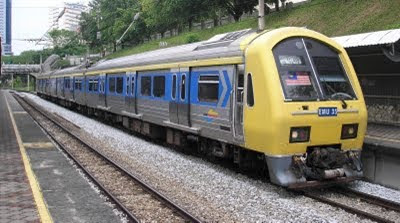
Plan for Life ~ Plan for Future
Saturday, December 17, 2011
Project 3 KL traffic congestion(rail transit contribution and its flaw)

Tuesday, November 15, 2011
Project 2

Nothing is Waste
Waste is human concept. In nature, nothing is waste, everything could be a part of natural circulation. The things regarded as waste are just useless for some human activities.
"3R" Between the Mine and the Dump
Most materials flow directly from their natural source to processing plant, to manufacturing industry, to consumers, and lastly to the dump. Actually, materials can be "3R"
Reuse--Direct reuse of material goods without changing their form(packaging, bottle)
Recycle--For goods clearly at the end of their usefulness, complete recycling is generally possible(paper product)
Recover--Resources also can be recovered at centralized facilities designed to recycle mixed urban waste
3 Components of Sustainable Resource Policy:
Waste reduction--smaller, simpler, easy repaired, durable products
Waste separation--require consumers segregate waste but not mix them together
Waste recovery--need high technology, centralized facilities to re-segregate mixed waste into their useful component
Seven Steps Toward Practical Solutions
1. Waste reduction must be a top priority
2. Planners should conduct a fair and thorough environmental and economic comparison of all waste reduction, recycling, treatment, and disposal method
3. Regulation of incineration, landfilling, and recycling should comprehensively address the environmental consequences of improper waste management
4. Solid waste management efforts must be expanded to include source reduction of toxic constituents and maximum waste segregation
5. Incinerator vendors should be held accountable for their promises about plant performance through contract
6. Recycling should be supported by fiscal policies that reflect its full potential as a solid waste management alternative
7. Expanded recycling collection programs must be accompanied by market development initiatives
Reference:
Richard A. Denison and John Ruston, RECYCLING&INCINERATION, Island Press, 1990
Denis Hayes, Repairs, Reuse, Recycling--First Steps Toward a Sustainable Society, Worldwatch Institute, 1978
Sunday, November 13, 2011
Project 3

Planning Issue: Urban Traffic Congestion
Demand>Supplies, Volume of Traffic>Available road capacity
2 Main Reasons:
1) Limited road capacity
2) The number of vehicles increasing
Limited Road Capacity:
--Indiscipline of road user (talking on cellphone when driving)
--Illegal parking on road side
--Hawkers on road side
--Accident
--Poor road design (no pedestrain bridge&underpass)
--The mixture of traffic
--etc.
The number of vehicles increasing:
--Urbanization
--Population growth
--Higher incomes
--Car price decreased
--etc.
Negative effect of traffic congestion:
--Delay and wasting time
--Increasing wear and tear of vehicles
--Wasting fuel
--Increasing air pollution
--Uncomfortable (affect mood of driver&passenger)
--Will delay emergency (eg. ambulance)
Economic Conflict:
Growth of demand==>Increasing cost of supply
In some cases, Increasing cost of supply
So, the congestion need to be tolerated untill the benefits rise sufficiently to justify the higher road construction costs.
Solutions:
As we know, traffic congestion because Demand>Supplies.
So, the solution could start from 2 aspect: Increasing supply and Reduce demand
Increasing Supply:
--Increasing road capacity (add more lanes)
--Creating new routes
--Traffic management(CCTV control and monitor traffic)
--Creating bridge, overpass etc.
--Road facilities improvement
--etc.
Reduce Demand:
--Parking restriction
--Reduction of road capacity to force traffic onto other travel mode
--Increasing road pricing, petrol tax
--Road space rationing
--Education, incentive to use public transport
--etc.
Other solutions:
--School&company control dismiss time, avoid peak hour or differ dismiss time
--Encourage online business(shopping online etc.)
For example, KTMB (Keretapi Tanah Melayu Berhad), monorail and light rail helped to solve traffic congestion in Kuala Lumpur.
Saturday, November 12, 2011
Project 2 topic statement and Objectives



Malaysia Policies
Preventing and managing waste is the heart of sustainable development. National Vision Policy(NVP) pursue environmentally sustainable development to reinforce long-term growth.
http://www.undp.org.my/malaysia-developing-a-solid-waste-management-model-for-penang



















